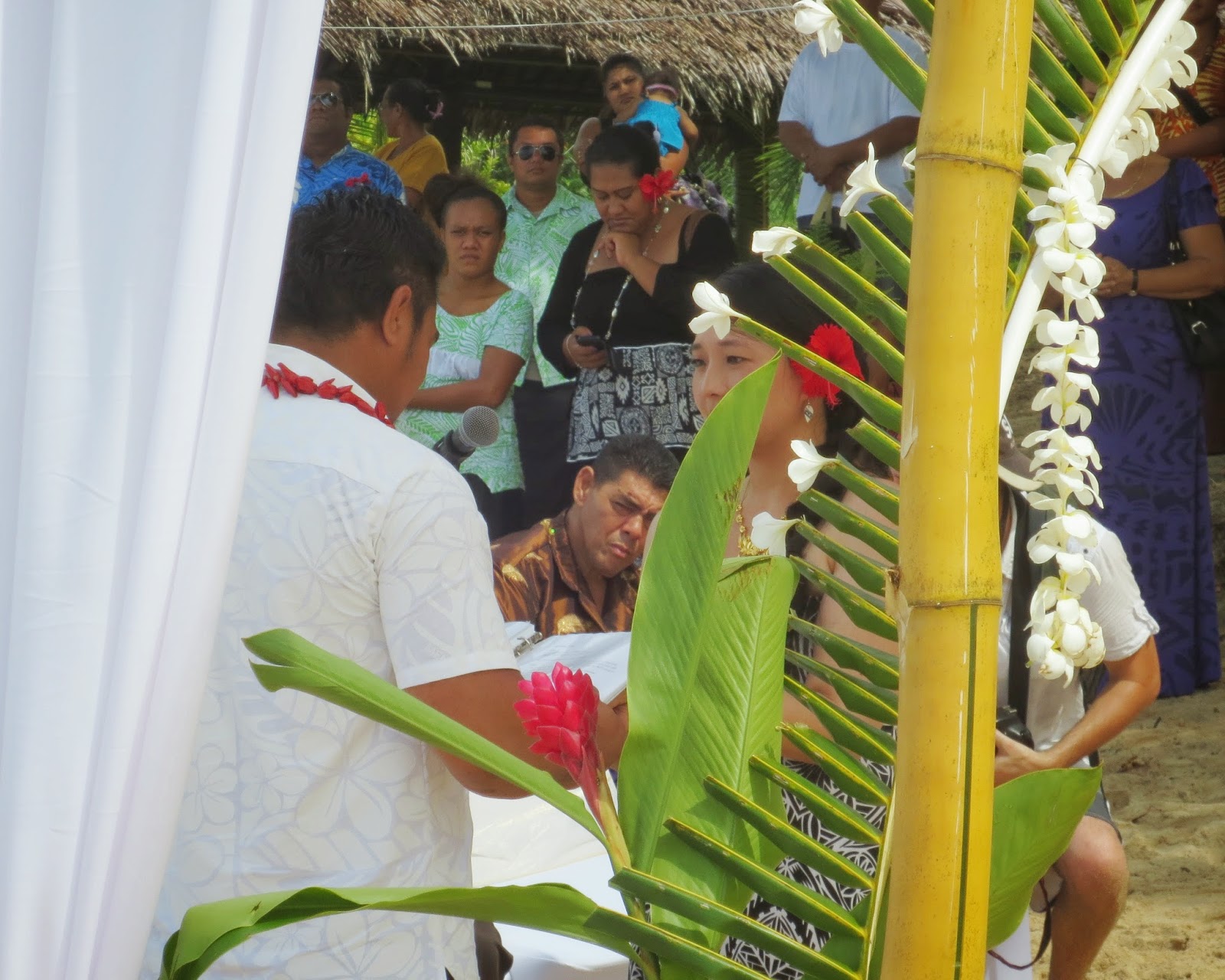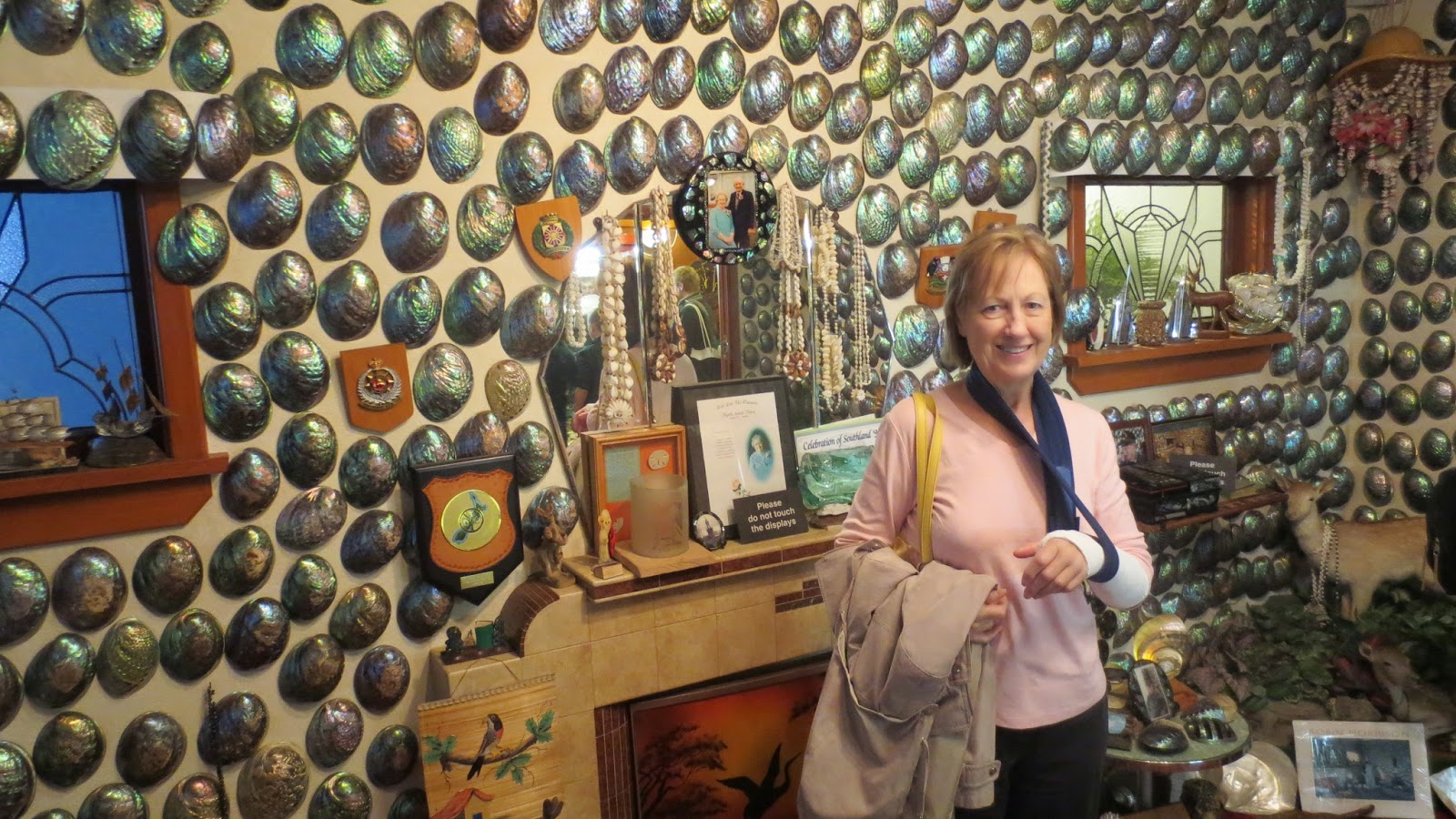February 1, 2015
It was a hot, humid, rainy night in Samoa on February 1, 2015 at LeUarina Resort when a resort employee summoned me to the dining room. There on the floor lay Mary in pain with a misshapen left arm. She had tripped on an almost invisible step, cushioning her fall with her arm. In the back seat of our rental car, I drove one hour to the Emergency Room at the main hospital in Apia, trying not to drive too fast over the roads many speed bumps.
Now that night, it just so happened to be the night that the entire Emergency Room was being moved from the old hospital to the newly Chinese built hospital 25 yards away. There lay Mary on a gurney as file cabinets, IVs, bed pans, and employees scurried about. Now Mary was very familiar with Samoan hospitals from her Peace Corps days. The seemingly frantic state of affairs along with differing opinions as to what should be done with her broken arm did not ease her concerns. An injection of a strong pain killer helped to ease the pain, if not the concerns about what was her "good" wrist. Her right wrist and right arm previously broken on icy falls in Minnesota.
Laying helplessly in an Emergency Room anywhere is a frightening experience. Couple that with being in a strange country with different medical practices and being uncertain about what is to come next, may give you some feeling about the world we were in.
Samoans are a competent and resourceful people, although not as or too communicative as we might wish the to be. The medical staff determined the break to be a serious one, the end of the radius broken into three segments across the wrist joint. Their debate was whether to wait a week to set the wrist, manually manipulate the break into place, or to surgically implant pins, of which Samoa had none. Our choice was to use our travel insurance to return home for treatment or stay.
Mary was wheeled into the new air-conditioned hospital, given a brand new bed while she awaited the arrival of the Orthopedic doctor the next morning. The staff must have taken umbrage with me, my rusty Samoan, and my Samoan tattoo, because they provided me with a bed next to Mary, not usual Samoan hospital policy.
The next morning the Head of Orthopedics, a man with little compassion for Mary's condition, said they would manually manipulate the break. Mary was wheeled into the operating room, given a general anesthetic, and wheeled out with a partial cast. The young Samoan Fiji-educated surgeon who actually performed the manipulation explained what they did and why. He advised we have a CRT done, get a second opinion, and get a hard cast when we get to New Zealand, since Samoa did not have a CRT machine. We were given the original x-ray film and discharged.
In retrospect, I have always been impressed with Samoan hospitals and their staff. With limited resources, what they do is confirmed to be correct when we return to the "First World" at a fraction of the cost. In fact Mary's total hospital bill came to about $75 USD.
Now on our fourth day, we continued on in Samoa.
In Christchurch, New Zealand on February 11th, we got introduced to a different medical system. In New Zealand your first medical step was to visit an "Accident and Medical Clinic" to see a GP, General Practitioner, before seeing any orthopedist. At the clinic we were told they did not have a CRT machine and we should go to the Emergency Room at the hospital. At the Christchurch Hospital, we were told we had to first see a GP who would the refer us to an orthopedist. We tried to explain our situation while they conferred among themselves. While we awaited a taxi to take us back to the clinic where we had first started, a receptionist told us that after conferring with the accounting department we could see an orthopedist, but first we needed to pay $314.34 USD, all inclusive for the day, VISA card accepted.
%2BMary%2B%40%2BHospital.JPG)
The hospital GP, a former orthopedist, said a CRT was unnecessary, x-rayed the wrist again, put on a hard plaster cast in the "Plaster Room", gave some more pain pills, and said Mary should have the wrist looked at again each week for the next two weeks. He said the wrist looked as good as it could be, not the most reassuring statement.
Our last New Zealand hospital visit was in Wellington on February 18th. Again we first went to a "Accident and Medical Clinic" where x-rays were again taken. The GP said it looked good, explained the benefits of a plaster cast vs a fiberglass cast, and said there was no need to have the wrist examined again until returning home to the US. The visit cost $213.63 USD, VISA card accepted.
We learned that if Mary had broken her wrist in New Zealand, all medical costs are free. This program is to insure quick recovery from accidental, not extreme sport, injury and is part of their national medical insurance which applies to visitors too. Since Mary's accident occurred in Samoa, we do not qualify.
Just how good our travel medical insurance is, we will soon find out. The travel insurance company's main concern to date is whether Mary wanted to continue the trip or return home. As we continued our trip, many people confused her raised arm and exercising her wiggling fingers as a friendly wave. She became a minor celebrity as others shared their broken bone experiences.
Postscript: March 5, 2015
Today
Mary went for an examination of her arm. The orthopedic surgeon saw the
x-rays and plastic cast. She immediately called in her associates and
medical students, exclaiming what a marvelous job was done in Samoa and
New Zealand in manipulating the break and setting the plaster cast. She
said that skill is a hard one to master. Here in the US, they would have
done surgery and fixed the break with a plate and pins.
It is amazing how in both of Mary's Samoan hospital experiences, the right thing was done.
For those who might be interested, below are triage signs indicating the priority of treatment at New Zealand hospitals and clinics. Also New Zealand x-rays of the fracture.


.JPG)

%2BMary%2B%40%2BHospital.JPG)
%2BMary%2B%40%2BHospital.JPG)
%2BClinic%2BTriage%2BSign.JPG)
%2BClinic%2BTriage%2BSign.JPG)

.JPG)

.JPG)
.JPG)
.JPG)
.JPG)
.JPG)
.JPG)
%2BIntroduction.JPG)
.JPG)
.JPG)
.JPG)
.JPG)
.JPG)
.JPG)



.JPG)







.JPG)


.JPG)

.JPG)
.JPG)
.JPG)
%2BTour%2BBus.JPG)
%2BEarthquake%2BDamage.JPG)
%2BEarthquake%2BDamage.JPG)
%2BDamaged%2BStatium.JPG)
%2BChair%2BMemorial.JPG)
%2BExBuilding%2BSite%2Bwhere%2B100%2Bpeople%2Bdied.JPG)
%2BMuseum%2BPaua%2Bshells.JPG)
%2BPunting.JPG)
%2BTour%2BBus.JPG)